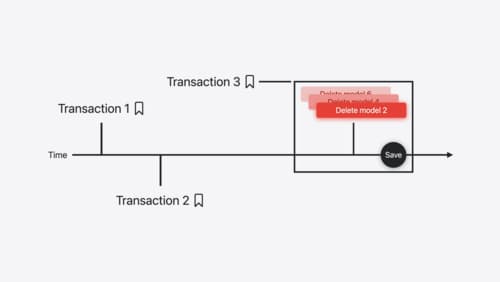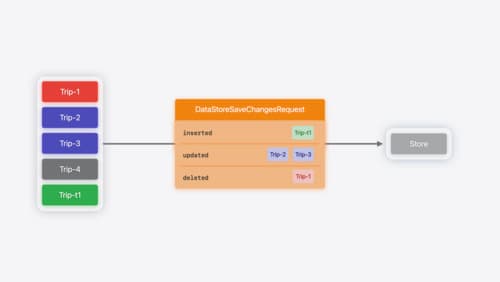How can I use Core Data with Swift 6?
Asked on 2024-07-31
1 search
To use Core Data with Swift 6, you can leverage the new Swift Data framework introduced in iOS 17. Swift Data simplifies building your app's model layer and persisting it across launches. Here are some key points and sessions that can help you get started:
-
Introduction to Swift Data:
- Swift Data is a framework that allows you to model and persist your app's data in Swift across all of Apple's platforms. It provides persistence, modeling, migration, graph management, synchronization with CloudKit, and more.
- What’s new in SwiftData
-
Adopting Swift Data:
- To use Swift Data with your models, import the framework and decorate each model with the
@Modelmacro. This macro is the powerhouse of Swift Data. - Example: In the "Trips" app, the model container modifier on the Window group tells the entire view hierarchy about the model trip.
- What’s new in SwiftData
- To use Swift Data with your models, import the framework and decorate each model with the
-
Custom Data Stores:
- Swift Data allows you to create custom data stores using the new
Datastoreprotocol. This enables support for any persistence backend, such as SQLite, a remote web service, or JSON files. - Create a custom data store with SwiftData
- Swift Data allows you to create custom data stores using the new
-
Schema Customization:
- You can define your schema with just a few additions to a normal Swift class, starting with applying the
@Modelmacro. You can further refine it using attributes to specify behaviors on properties and relationships to describe how models relate to one another. - Platforms State of the Union
- You can define your schema with just a few additions to a normal Swift class, starting with applying the
-
Index and Unique Constraints:
- Swift Data introduces the
@Indexand@Uniquemacros to make your queries more efficient and to avoid duplicate models. - What’s new in SwiftData
- Swift Data introduces the
-
History API:
- Swift Data provides a history API to track changes to your app's models, which is useful for tracking local changes that need to be synced to a remote web service.
- Track model changes with SwiftData history
Relevant Sessions:
- What’s new in SwiftData
- Create a custom data store with SwiftData
- Platforms State of the Union
- Track model changes with SwiftData history
These sessions provide a comprehensive overview of how to use Swift Data, including adopting it in your app, customizing your data store, and optimizing your queries.

Track model changes with SwiftData history
Reveal the history of your model’s changes with SwiftData! Use the history API to understand when data store changes occurred, and learn how to use this information to build features like remote server sync and out-of-process change handing in your app. We’ll also cover how you can build support for the history API into a custom data store.

Platforms State of the Union
Discover the newest advancements on Apple platforms.

Create a custom data store with SwiftData
Combine the power of SwiftData’s expressive, declarative modeling API with your own persistence backend. Learn how to build a custom data store and explore how to progressively add persistence features in your app. To get the most out of this session, watch “Meet SwiftData” and “Model your schema with SwiftData” from WWDC23.
